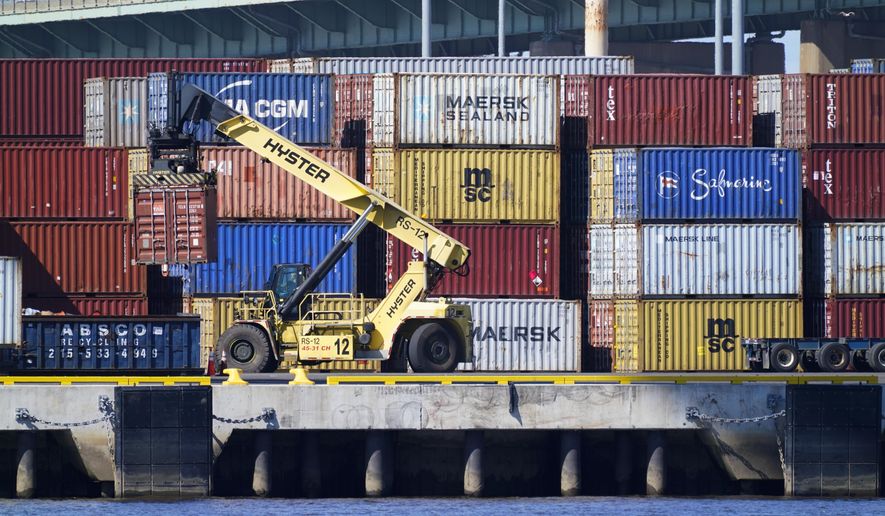OPINION:
Nearly half a million shipping containers packed with toys, holiday decorations, appliances, and furniture are stuck off the coast of Southern California, waiting to be offloaded.
Warehouses are filling up, lacking space for the goods, as truckers are in short supply and cannot transport the items at the speed needed to ease the backlog. About 98% of warehouses in Southern California’s logistics-heavy Inland Empire region are fully occupied, while the entire Western U.S. has a 3.6% vacancy rate, according to the Wall Street Journal.
Freight volumes are crushing the Union Pacific railroad, with cargo containers pilling up in its intermodal rail yard in Joliet, Illinois. This summer, nearly 8,000 containers – roughly double the amount last year – clogged up its rail yards, making it tough to navigate and offload. At one point, trains trying to get to the station were backed up for 25 miles, the Washington Post reported. In July, the railroad decided to halt all trains arriving from the West Coast to clean up its operation.
Drivers are badly needed. Trucking fleets have raised driver pay, hoping to attract more applicants. They’re also stepping up equipment orders. Still, they’re unable to catch up to the demand. A global semiconductor shortage is limiting new truck production. Overworked drivers are quitting or refusing to work night shifts. As demonstrated in last month’s job report, 183,000 workers dropped out of the labor market entirely.
Desperate to avoid massive shortages come the holiday season, Home Depot, Walmart, Target, and Costco have taken the extraordinary measure to charter their own ships from Asia to the West Coast. It comes at a higher cost, of course, which they will pass along to the consumer in terms of higher product prices.
Americans are already feeling inflationary pressures. The current inflation rate has forced U.S. consumers to spend another $175 a month on food, fuel, and housing, according to Mark Zandi, the chief economist at Moody’s Analytics. That’s an extra $2,100 a year. Rapidly rising prices for everyday goods have completely swamped any wage growth for workers, and taking inflation into account, wages have fallen over the last year.
What’s worse is the Biden administration is clueless when it comes to economics 101 and has been lying to the American people repeatedly, playing down the severity of this supply chain catastrophe. They’ve called inflation “transitory,” even as it’s been running at a 30-year high for months. In August, President Joe Biden said: “these bottlenecks and price spikes will reduce as our economy continues to heal.” Those working within the supply chain paint a grimmer picture – not expecting our ports and logistical issues to clear up well into 2023.
Mr. Biden is desperately trying to sell his “Build Back Better” economic agenda, proposing $3.5 trillion in government spending on cradle to grave entitlements, which will only entice more to stay out of the labor market. It will be paid for by taxing businesses, which are already feeling the pinch of supply chain bottlenecks.
When asked if raising the business tax rate to a level higher than communist China’s would lead to even higher consumer prices, Mr. Biden’s White House Press Secretary laughed off the question.
“There are some … who argue that, in the past, companies have passed on these costs to consumers,” Jen Psaki said last month, defending Mr. Biden’s entitlement plan. “We feel that that’s unfair and absurd, and the American people would not stand for that.”
The American people have no choice in the matter. As for it being “unfair” and “absurd,” well, it’s just economics 101. Several studies have shown that consumers bear about 31% of the cost of corporate tax increases through higher prices on consumer products.
Trillions in new spending are not the fix our economy needs right now – it’s just a recipe for even more inflation and higher prices. Its build back broke.




Please read our comment policy before commenting.